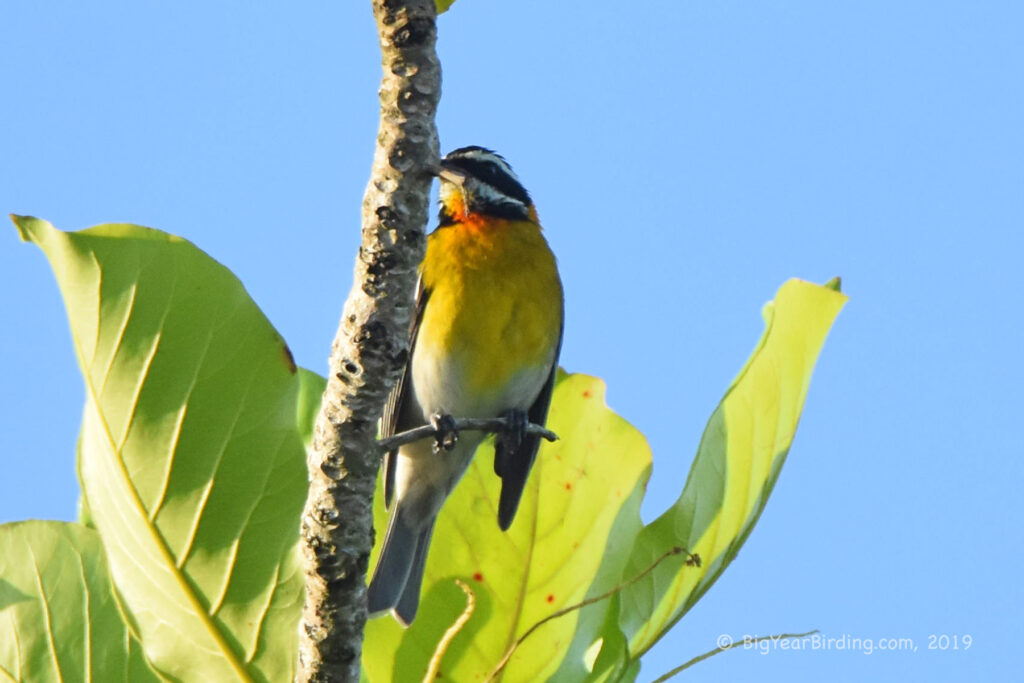
The Puerto Rican Spindalis (Spindalis portoricensis) is a species of bird found in the tropical forests and woodlands of Puerto Rico and the Virgin Islands. It measures approximately 6.5 inches in length and weighs approximately 1.2 ounces. This bird is easily recognizable by its distinctive plumage, which features a mix of green, yellow, black and white feathers.
The male Puerto Rican Spindalis has a bright green head and back, a yellow belly and a white face with black markings. The female bird is similar in appearance but has a greenish-yellow head and a browner back. Both the male and female birds have a long, black tail with white edges that are easily noticeable in flight. In addition, the species has a sharp, hooked bill that is used for foraging and cracking open seeds.
Puerto Rican Spindalises feed on a variety of fruits, insects, and nectar. They are usually found foraging in the lower and mid-canopy of the forest, where they are able to find food in the thick vegetation. During the breeding season, which runs from May to August, the birds form pairs and nest in the hollows of trees. The female bird lays two to three eggs and both parents work together to care for the young.
The Puerto Rican Spindalis is a non-migratory bird, and is found year-round in its native range. However, the species is considered to be a vulnerable species due to habitat loss, deforestation and the introduction of non-native species to its native range. Conservation efforts are underway to protect the bird’s habitat and to promote its recovery.
In conclusion, the Puerto Rican Spindalis is a colorful and distinctive bird that is found in the tropical forests and woodlands of Puerto Rico and the Virgin Islands. It measures approximately 6.5 inches in length and weighs approximately 1.2 ounces, and is easily recognizable by its green, yellow, black and white plumage and its long, black tail with white edges. The bird is a non-migratory species, but is considered vulnerable due to habitat loss and the introduction of non-native species. Conservation efforts are underway to protect the bird’s habitat and promote its recovery.
